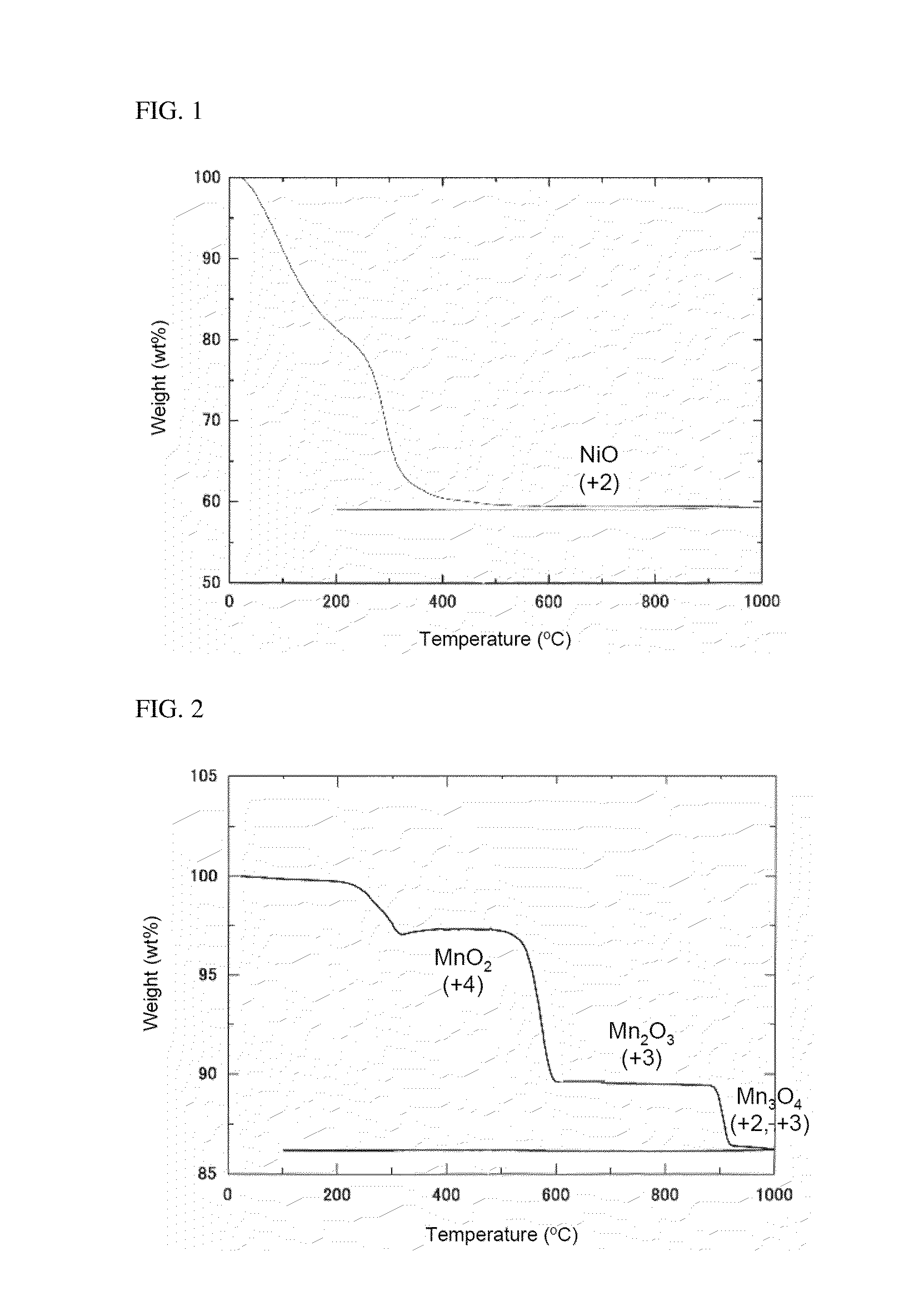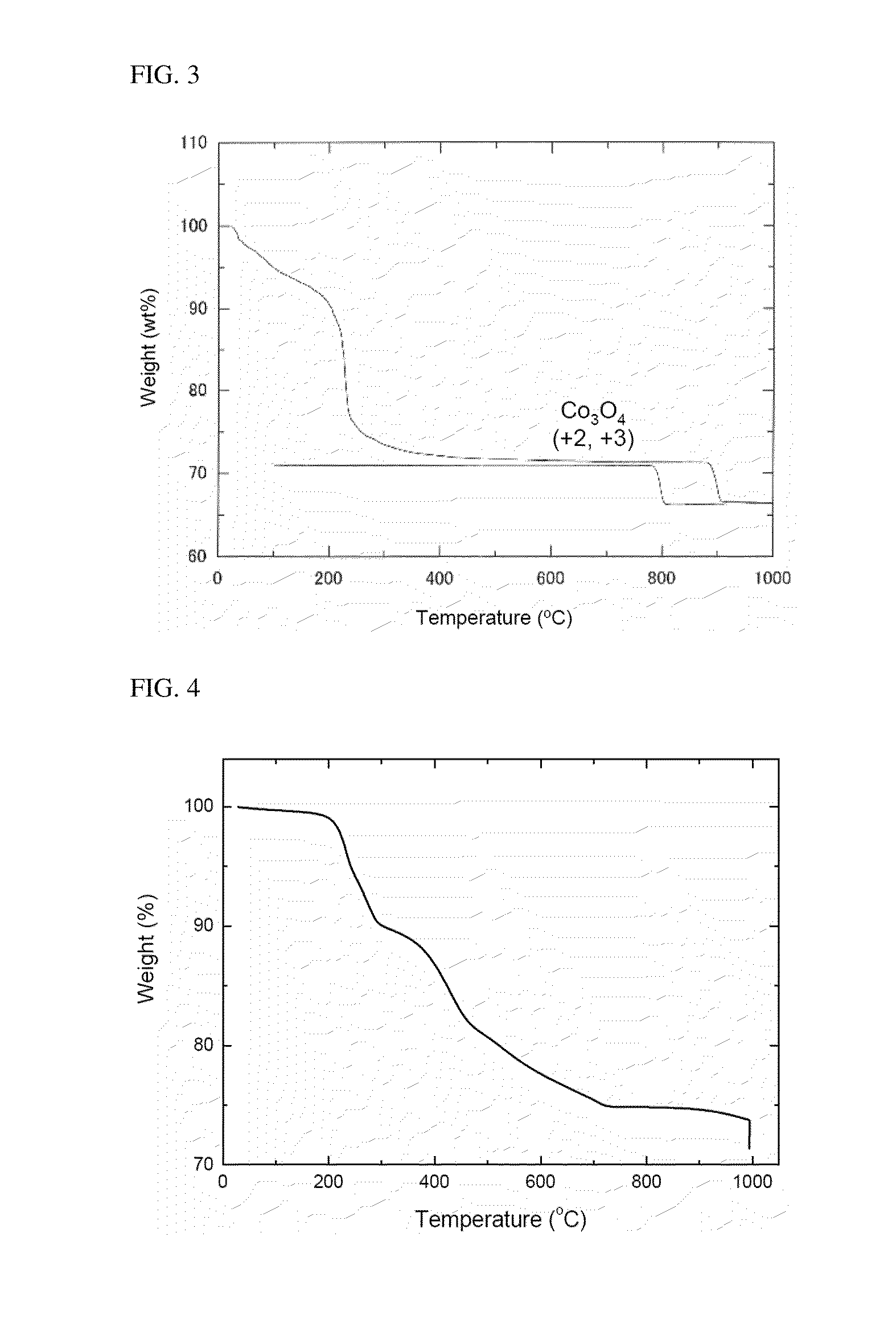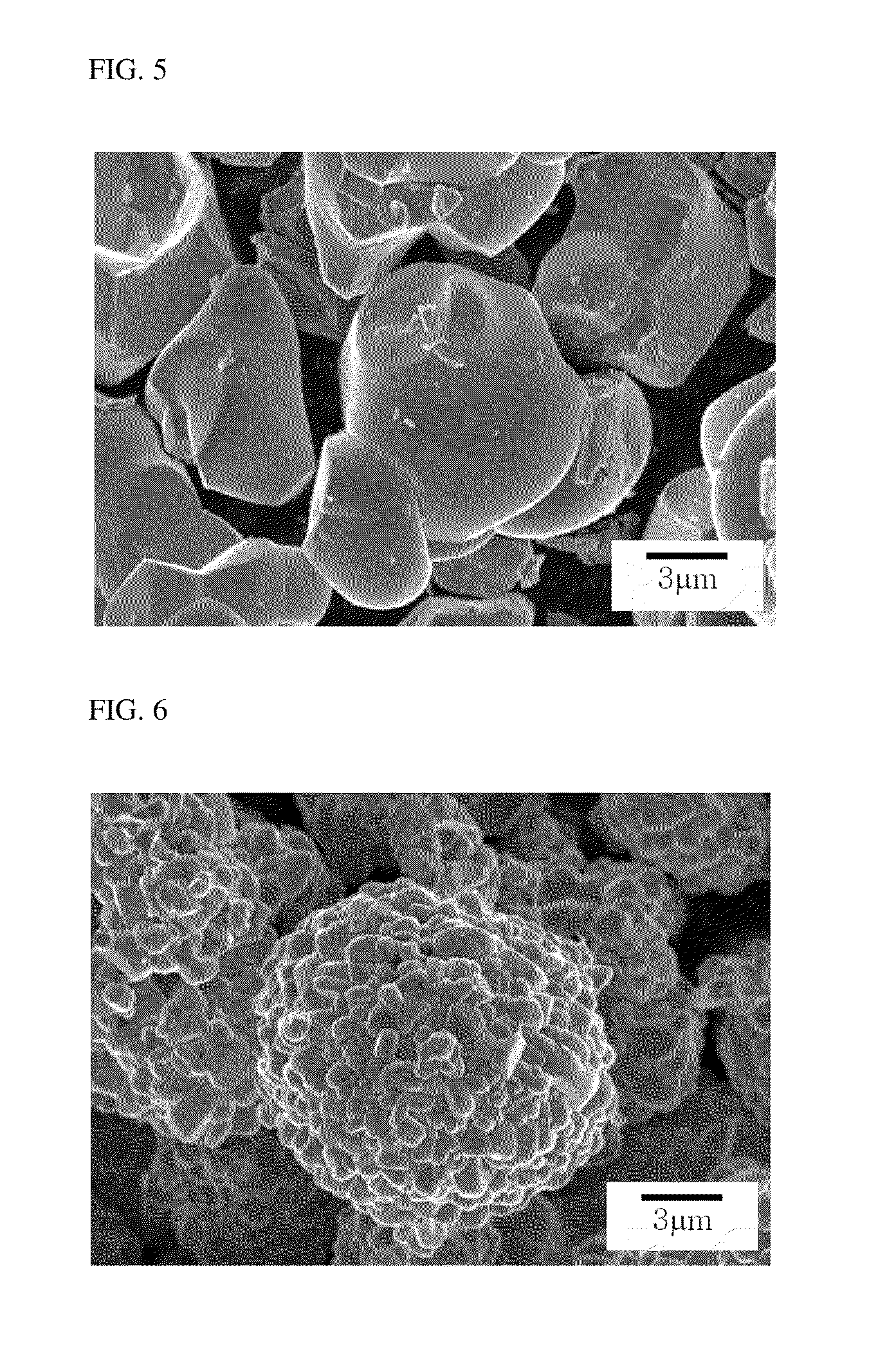Electrode active material for lithium secondary battery
a lithium secondary battery and active material technology, applied in the direction of nickel compounds, cell components, sustainable manufacturing/processing, etc., can solve the problems of low stability, limited mass-utilization as power sources for electric vehicles, and low capacity of lithium manganese oxides,
- Summary
- Abstract
- Description
- Claims
- Application Information
AI Technical Summary
Benefits of technology
Problems solved by technology
Method used
Image
Examples
example 2
[0097]An electrode active material was prepared in the same manner as Example 1, except that metal hydroxide wherein the molar ratios of transition metals, Ni, Mn and Co were 53%, 27% and 20%, respectively, was used and the heating temperature was 970° C. (See FIG. 6).
experimental example 1
[0101]The powders prepared in Examples 1 and 2, and Comparative Examples 1 to 9 were filled with a resin and fixed thereon, and the cross-section of the particles cut such that the cross-section of them was exposed was observed by SEM. 50 particles were randomly selected, the long and short axis lengths thereof were measured and the average length thereof was calculated, to obtain an average primary particle diameter. The results thus obtained are shown in Table 1 below.
experimental example 2
[0102]Each electrode active material prepared in Examples 1 and 2, and Comparative Examples 1 to 9, Denka Black as a conductive material and PVdF as a binder were mixed in a ratio of 95%, 2.5% and 2.5%, respectively, NMP was added to the mixture and the resulting mixture was thoroughly mixed to prepare a slurry with a suitable viscosity. The slurry was applied to an aluminum foil with a thickness of 20 μm, dried at 130° C. and roll-pressed to fabricate a battery.
[0103]A lithium foil acting as an anode, a separator and an electrolyte solution were assembled to fabricate a coin battery. The battery was subjected to electrochemical experiments. The first cycle discharge capacity was measured to obtain a discharge capacity and the results thus obtained are shown in Table 1 below.
PUM
| Property | Measurement | Unit |
|---|---|---|
| average primary diameter | aaaaa | aaaaa |
| average primary particle diameter | aaaaa | aaaaa |
| average primary particle diameter | aaaaa | aaaaa |
Abstract
Description
Claims
Application Information
 Login to View More
Login to View More - R&D
- Intellectual Property
- Life Sciences
- Materials
- Tech Scout
- Unparalleled Data Quality
- Higher Quality Content
- 60% Fewer Hallucinations
Browse by: Latest US Patents, China's latest patents, Technical Efficacy Thesaurus, Application Domain, Technology Topic, Popular Technical Reports.
© 2025 PatSnap. All rights reserved.Legal|Privacy policy|Modern Slavery Act Transparency Statement|Sitemap|About US| Contact US: help@patsnap.com



